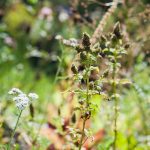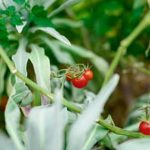Are you ready to dive into fall vegetable gardening in Oklahoma? As the temperatures start to cool and the days get shorter, it’s the perfect time to plant a variety of vegetables that thrive in this unique climate. Fall vegetable gardening in Oklahoma has numerous benefits, including a longer growing season, less intense heat, and fewer pests and diseases to contend with. With the right knowledge and preparation, you can enjoy a bountiful harvest well into the cooler months.
Oklahoma’s climate presents its own set of challenges and opportunities when it comes to fall vegetable gardening. Understanding the growing season and weather patterns specific to this region is essential for successful cultivation. By choosing the right plants and implementing proper care techniques, you can create a thriving fall garden that provides fresh, homegrown produce for your family.
In this article, we’ll explore everything you need to know about fall vegetable gardening in Oklahoma. From selecting the best vegetables for fall planting to preparing your garden for the season, we’ll cover it all. Whether you’re a seasoned gardener or new to cultivating your own food, our comprehensive guide will help you navigate the ins and outs of fall vegetable gardening in Oklahoma while maximizing your harvest. Let’s get started.
Choosing the Right Vegetables for Fall Planting
When it comes to fall vegetable gardening in Oklahoma, choosing the right vegetables for planting is crucial to a successful harvest. The cooler temperatures and shorter daylight hours make certain crops thrive while others may struggle.
Some of the best vegetables to consider for fall planting in Oklahoma include leafy greens like spinach, lettuce, and kale, as well as root vegetables such as carrots, beets, and radishes. These cool-season crops not only tolerate the climate but also benefit from the mild temperatures and can even improve in flavor after a light frost.
Tips for Selecting the Best Varieties
When selecting varieties for fall planting in Oklahoma, it’s important to choose those with a shorter maturity date to ensure they have enough time to grow before the first frost. Look for cold-tolerant varieties that can withstand lower temperatures without being damaged. For example, opt for lettuce varieties like Winter Density or Arctic King that are known for their ability to handle chilly weather.
Additionally, consider choosing disease-resistant varieties to protect your fall garden from common fungal issues that can arise in periods of cool and damp weather. By carefully selecting the right vegetable varieties, gardeners can optimize their fall harvest despite the challenges of Oklahoma’s unique climate.
Key Fall Vegetables for Oklahoma
In addition to leafy greens and root vegetables, other key vegetables suitable for fall planting in Oklahoma include broccoli, cauliflower, Brussels sprouts, and peas. These cool-season crops perform well in the state’s climate and offer an abundant yield when properly cared for.
Furthermore, herbs such as parsley, cilantro, and chives also thrive in the fall months in Oklahoma and can add flavor and nutrition to autumn dishes. By choosing a diverse selection of cold-tolerant vegetables and herbs for fall planting in Oklahoma, gardeners can enjoy an extended growing season and a bountiful harvest even as temperatures begin to drop.
Preparing the Garden for Fall Planting
When it comes to fall vegetable gardening in Oklahoma, preparation is key to a successful harvest. The unique climate and growing season in Oklahoma present both opportunities and challenges for gardeners. First, it’s important to understand the benefits of fall vegetable gardening. Not only does it extend the growing season, but it also allows for a variety of cool-season crops to thrive in the state’s mild autumn weather.
Choosing the right vegetables for fall planting is essential. Some vegetables that thrive in Oklahoma’s fall season include broccoli, cauliflower, kale, lettuce, carrots, radishes, and spinach. When selecting varieties for the region, look for those with shorter maturity dates to ensure they have enough time to grow before the first frost.
Soil preparation and amendment are crucial steps in preparing the garden for fall planting. Before planting your fall vegetables, make sure to test your soil and adjust pH levels as needed. Incorporating organic matter such as compost or aged manure will improve soil fertility and drainage. Additionally, implementing pest and weed control measures in the fall garden will help create a healthy growing environment for your vegetables.
| Vegetables Thriving in Oklahoma’s Fall Season | Brief Description |
|---|---|
| Broccoli | This cool-season crop thrives in Oklahoma’s mild autumn weather. |
| Lettuce | Lettuce is a great addition to your fall garden as it prefers cooler temperatures. |
| Kale | Kale is a hearty green that can withstand cooler temperatures and light frosts. |
Planting and Transplanting in the Fall
Fall is a great time to start a vegetable garden in Oklahoma, as the cooler temperatures and milder weather create an ideal environment for growing a variety of crops. When it comes to fall vegetable gardening in Oklahoma, it’s essential to choose the right vegetables for the season and ensure proper planting and transplanting techniques.
When selecting which vegetables to plant in the fall, it’s important to consider the unique climate and growing season in Oklahoma. Some vegetables that thrive in Oklahoma’s fall season include broccoli, cauliflower, carrots, lettuce, spinach, kale, and radishes. These cool-season crops can withstand the fluctuating temperatures of fall and are well-suited for Oklahoma’s climate.
To ensure successful planting and transplanting in the fall, it is crucial to follow proper techniques. When planting seeds, be sure to sow them at the correct depth recommended on the seed packet. For transplants, dig a hole slightly larger than the root ball of the plant and gently place it into the soil at ground level. Proper spacing between plants is also important to allow for adequate growth and airflow.
In addition to following these guidelines for planting and transplanting in the fall, it’s important to consider other factors such as watering, feeding, and protection from early frost. By following these tips and choosing suitable vegetables for fall planting, gardeners in Oklahoma can enjoy a bountiful harvest of fresh produce throughout the autumn season.
| Fall Vegetables | Recommended Varieties |
|---|---|
| Broccoli | Pacific Blue Hybrid |
| Carrots | Scarlet Nantes |
| Lettuce | Romaine |
| Spinach | Bloomsdale Longstanding |
Caring for Fall Vegetables
Planting fall vegetables in Oklahoma can be a rewarding experience, as the cooler temperatures and ample sunshine create ideal growing conditions for a variety of crops. When it comes to fall vegetable gardening in Oklahoma, it’s important to choose the right vegetables that thrive in the region’s unique climate. Some popular options for fall planting in Oklahoma include:
- Broccoli
- Cauliflower
- Brussels sprouts
- Carrots
- Lettuce
- Spinach
It’s essential to pay attention to watering and feeding guidelines for fall crops, as the drier air and fluctuating temperatures can impact the health of your plants. In addition to regular watering, consider implementing a feeding schedule with organic fertilizers or compost to ensure your fall vegetables have the necessary nutrients to thrive.
As the fall season progresses, it’s also important to have strategies in place for protecting plants from early frost. Covering your garden with row covers or cloches can help insulate plants and prevent damage from sudden temperature drops. Additionally, consider planting cold-hardy varieties and using mulch to protect root systems from freezing temperatures.
Harvesting and Storing Fall Vegetables
As the fall season progresses in Oklahoma, it’s important to know when and how to harvest the vegetables from your garden. Knowing the best practices for harvesting and properly storing your fall vegetables will ensure that you can enjoy your hard work well into the winter months.
Identifying When Fall Vegetables Are Ready for Harvest
Different vegetables have different signs that indicate they are ready to be harvested. For example, root vegetables like carrots and beets are usually ready when their tops begin to peek out of the soil. Leafy greens can be harvested continuously as they grow, while squash and pumpkins should be picked when their rinds are firm and the stems begin to dry out. Understanding these cues will help you determine the optimal time for harvesting each type of vegetable.
Tips for Storing and Preserving the Fall Harvest
Once you’ve harvested your fall vegetables, it’s important to store them properly to extend their shelf life. Root vegetables such as potatoes, carrots, and onions should be stored in a cool, dark place with good air circulation to prevent them from spoiling.
Leafy greens can be stored in the refrigerator or preserved through techniques such as blanching and freezing. Additionally, consider preserving some of your harvest by pickling or canning certain vegetables so that you can enjoy them throughout the winter months.
Understanding how to properly harvest and store your fall vegetables will ensure that you can make the most of your garden’s bounty long after the growing season has ended. By following these tips, you’ll be able to savor the flavors of your fall vegetable gardening in Oklahoma well into the year.
Dealing With Common Fall Gardening Challenges
Fall vegetable gardening in Oklahoma comes with its own set of challenges, but with the right knowledge and strategies, it is definitely possible to have a successful fall harvest. One common challenge that gardeners face during the fall season is dealing with disease and pests.
The cooler temperatures and damp conditions can create a perfect environment for various diseases to thrive. It’s important to be proactive in preventing and treating these issues to ensure the health of your fall vegetables.
Additionally, weather-related challenges can also impact fall vegetable gardening in Oklahoma. Sudden temperature drops or early frosts can damage or even kill your plants if you’re not prepared.
It’s important to have a plan in place for protecting your plants from unexpected cold snaps, whether it’s using row covers, cloches or other protective measures. Being aware of the typical weather patterns in your area and staying updated on weather forecasts can help you stay ahead of these challenges.
Furthermore, one effective way to deal with common fall gardening challenges is by implementing integrated pest management (IPM) practices. This approach focuses on prevention, monitoring, and control of pests and diseases through environmentally sensitive methods. By using techniques such as crop rotation, companion planting, and natural predators, gardeners can minimize the impact of pests and diseases on their fall vegetables without relying heavily on chemical interventions.
- Implementing crop rotation
- Using companion planting techniques
- Encouraging natural predators
With these strategies in place, gardeners can overcome the challenges associated with fall vegetable gardening in Oklahoma and enjoy a bountiful harvest. By being proactive in addressing disease and pest issues, staying prepared for weather-related challenges, and utilizing IPM practices, it is possible to have a flourishing fall garden in this unique climate.
Succession Planting and Extending the Fall Harvest
In conclusion, fall vegetable gardening in Oklahoma offers a unique opportunity for gardeners to continue their harvest well into the cooler months. By taking advantage of the mild climate and extended growing season, gardeners can enjoy a bountiful harvest of fresh produce even after summer has come to an end. Choosing the right vegetables for fall planting is crucial, and Oklahoma’s climate lends itself well to a variety of crops such as broccoli, kale, carrots, and spinach.
Preparing the garden for fall planting is essential for success, with proper soil amendment and pest control being key factors in ensuring healthy plant growth. Planting and transplanting in the fall requires careful attention to spacing and depth, but with the right techniques, gardeners can set their crops up for success. Caring for fall vegetables involves diligent watering and feeding, as well as strategies for protecting plants from early frost, which can be a concern in Oklahoma.
Harvesting and storing fall vegetables is the rewarding culmination of all the hard work put into the garden throughout the season. However, common challenges such as disease, pests, and weather-related issues must be addressed in order to maximize the fall harvest.
Succession planting is a valuable technique that allows for extended harvesting by staggering plantings throughout the season. By utilizing these strategies and tips for fall vegetable gardening in Oklahoma, gardeners can enjoy a rich harvest that extends well into autumn.
Frequently Asked Questions
What Vegetables Can You Plant in the Fall in Oklahoma?
In the fall in Oklahoma, you can plant a variety of vegetables such as broccoli, cauliflower, kale, lettuce, spinach, and radishes. These cool-season crops thrive in the state’s climate during autumn.
When Should I Start My Fall Vegetable Garden?
You should start your fall vegetable garden in Oklahoma around late July to early August. This timing allows for the vegetables to mature and be harvested before the first frost of the season.
What Vegetables Can I Plant in the Winter in Oklahoma?
During the winter in Oklahoma, vegetables such as carrots, beets, turnips, and garlic can be planted. These cold-hardy crops can withstand the lower temperatures and continue to grow throughout the winter months in the state.

If you’re looking to get into vegetable gardening, or are just looking for some tips on how to make your current garden better, then you’ve come to the right place! My name is Ethel and I have been gardening for years. In this blog, I’m going to share with you some of my best tips on how to create a successful vegetable garden.





